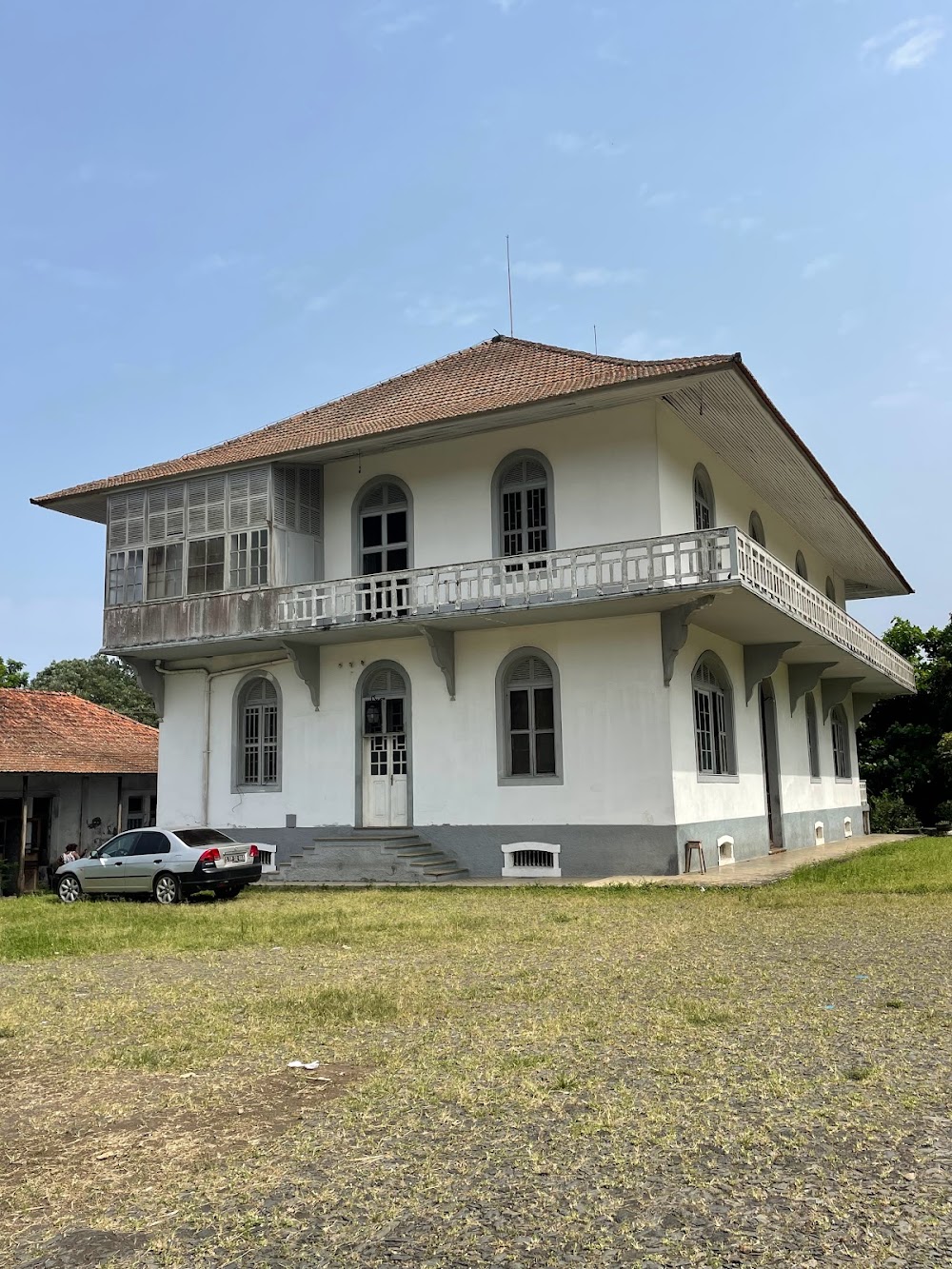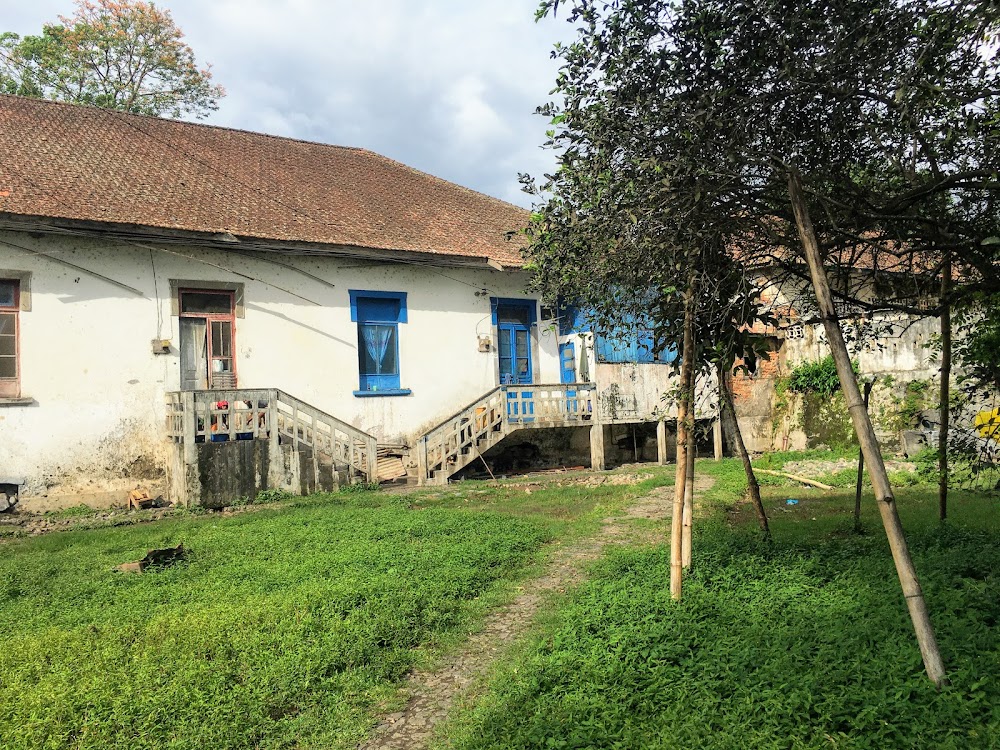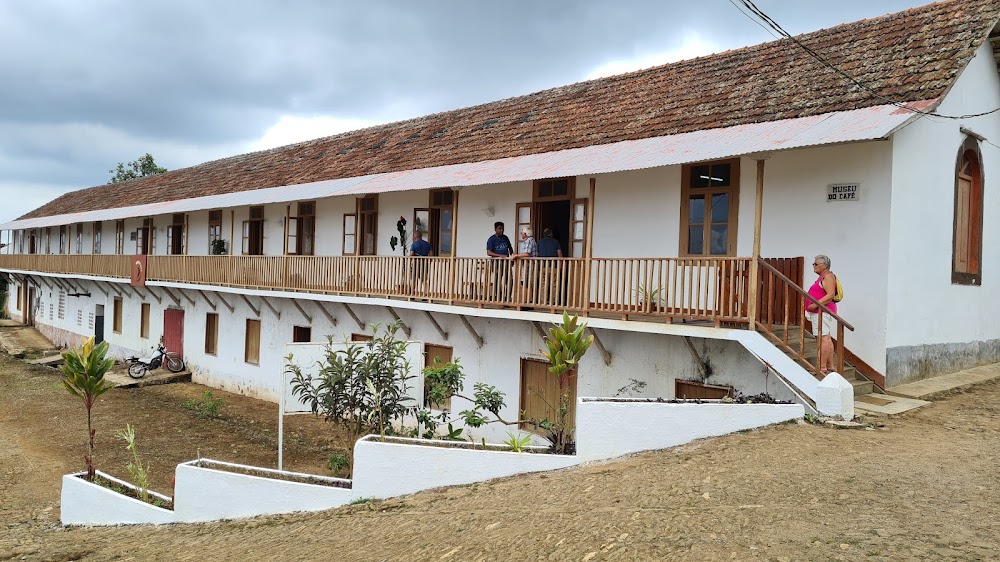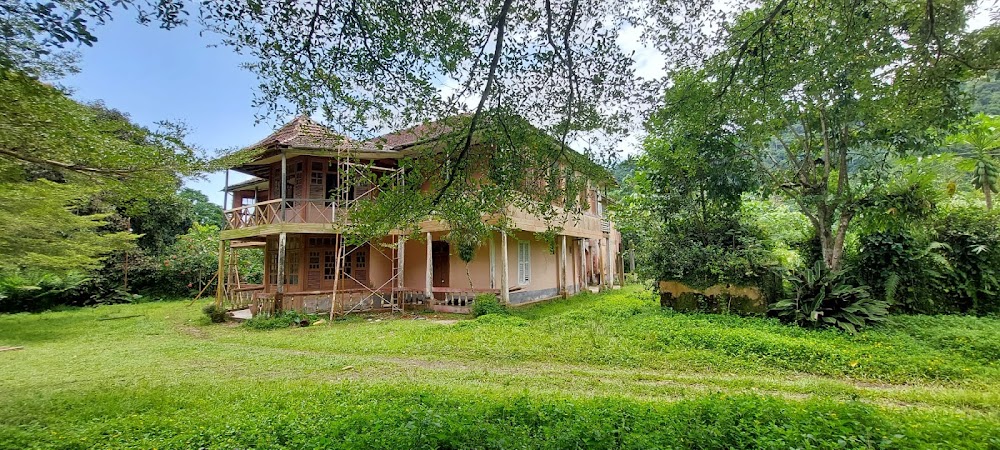Roça Diogo Vaz (Roça Diogo Vaz)
Related Places
Overview
Nestled in the breathtaking landscapes of Serravalle in São Tomé and Príncipe, the historic Roça Diogo Vaz plantation stands as a testament to the island's rich heritage and enduring legacy. This remarkable site, dating back to the colonial era under Portuguese rule, is celebrated as one of the island nation’s timeless treasures, reflecting its stunning nature and vibrant culture.
Established in the late 19th century, Roça Diogo Vaz was primarily built to support the booming cocoa and coffee industries, which were the principal exports of the island at that time. Portuguese settlers eagerly tapped into the fertile volcanic soils, famed for producing high-quality cocoa that was highly sought after in European markets.
The architectural design of Roça Diogo Vaz showcases the use of both local and imported materials. The plantation buildings, featuring splendid colonial architecture, were constructed from durable timber and stone to withstand the tropical climate. Over time, the estate expanded to include worker housing, a hospital, a chapel, schools, and vast cocoa fields, resembling a self-sufficient mini-town typical of plantation layouts from that era.
Labor on the plantation was predominantly provided by enslaved Africans and later by indentured servants. The conditions for these workers were harsh; they labored under strenuous circumstances and strict supervision. Despite these oppressive conditions, the workers cultivated a strong sense of community and resilience that has been passed down through generations.
A standout feature of Roça Diogo Vaz is its main house, often referred to as "Casa Grande." This grand mansion, which served as the residence for plantation owners, is a poignant reminder of the colonial past. Its architecture elegantly blends Portuguese and local styles, boasting wide verandas, tall windows, and high ceilings designed to combat the region's heat and humidity.
The plantation's success can be attributed not only to its fertile lands but also to the implementation of innovative agricultural techniques. Early adoption of advanced agronomic practices, such as shade-grown cocoa, intercropping, and selective breeding, significantly enhanced both the yield and quality of the cocoa beans. Roça Diogo Vaz became a model estate, setting standards for other plantations throughout the island.
As São Tomé and Príncipe navigated the complexities of political and social change, Roça Diogo Vaz experienced its share of transformation. Following the nation’s independence from Portugal in 1975, the plantation system underwent significant restructuring. Many plantations, including Roça Diogo Vaz, were nationalized, and land reforms were enacted to redistribute land to former workers and local communities. These pivotal changes played a crucial role in shaping the modern agricultural landscape of the island.
Today, Roça Diogo Vaz is enjoying a renaissance, revitalized with a focus on sustainable and organic farming practices. The plantation now attracts visitors eager to learn about its rich history and witness firsthand the journey of cocoa from bean to bar. Educational tours provide valuable insights into the ecological and social initiatives designed to preserve both the environment and the heritage of the plantation.
Artisanal chocolates produced from Roça Diogo Vaz cocoa have gained global acclaim, embodying the unique flavors of São Tomé and Príncipe’s terroir. These delectable products not only celebrate the plantation's enduring legacy but also highlight the resilience and innovation of its people.
Roça Diogo Vaz stands as a significant historical and cultural landmark in Serravalle. It serves as a poignant reminder of the region's complex colonial past while showcasing the potential for sustainable agricultural practices to foster positive change. Through its remarkable evolution, Roça Diogo Vaz continues to shine as a beacon of historical significance and a testament to the transformative power of perseverance and innovation.







